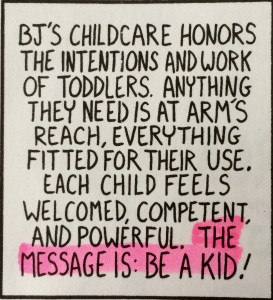Ask, Don’t Tell: The Classroom Environment
The classroom is a very unique concept. Students and a teacher are in a room together for 7 hours every day, which can be longer than some students spend awake in their own homes each day. What does this mean for the teacher, and more importantly, what does this mean for the students?
Hopkins (2011) and Ayers (2010) introduce us to the world of positive environment creation, in relation to our school classrooms. Hopkins presents five key themes that every classroom should account for:
- Everyone has their own unique and equally valued perspective
- Thoughts influence emotions, emotions influence actions
- Empathy and consideration
- Needs and unmet needs
- Collective responsibility for problem solving and decision making
Not only do these themes encourage the development of an accepting and student-centred classroom, but they also promote the well-being of the students. This can be either social, emotional, cognitive, psychological, or otherwise. All of these themes are key to creating the highest functioning future generation.
Ayers complements these themes by discussing the multiple purposes that classrooms face and the challenges of incorporating all of these needs into one classroom environment. The following quote struck me from this reading:

We as teachers have our own ideas when it comes to creating a learning environment, but sometimes our “adultness” removes our focus away from our students. We must consciously remind ourselves that the classroom is a shared environment and that we must hear from our students in regards to what environment they learn best in; we must ask, not tell our students where they want to learn.
In was regular during my time in elementary school that I would walk into a classroom on the first day of school and leave on the last day without the classroom environment changing. This meant that the same store-bought posters defining “perseverance” and telling us to “stand out and be unique” stared back at us for 10 months straight. Did that poster encourage me to persevere throughout the year? Not really. Would the concept have had a larger impression on me had we all created a piece of art that defined what perseverance meant to us, and then had them posted around the classroom? Probably. Why? Because the classroom would have been my environment for learning, a product of my creativity and learning.
This is exactly why the teacher must learn to step back from their authoritative role when it comes to creating a positive and enriching learning environment. The classroom might be home for the next 10 months to 31 people: 30 of which are students and 1 being the teacher. Who, then, is the environment truly for? Let students create their collective learning environment. Allow them to collaborate on the rules and goals of the classroom. Most importantly, ensure the students feel at home and included. The more comfortable the students are in their environment, the more enriching their learning will be.